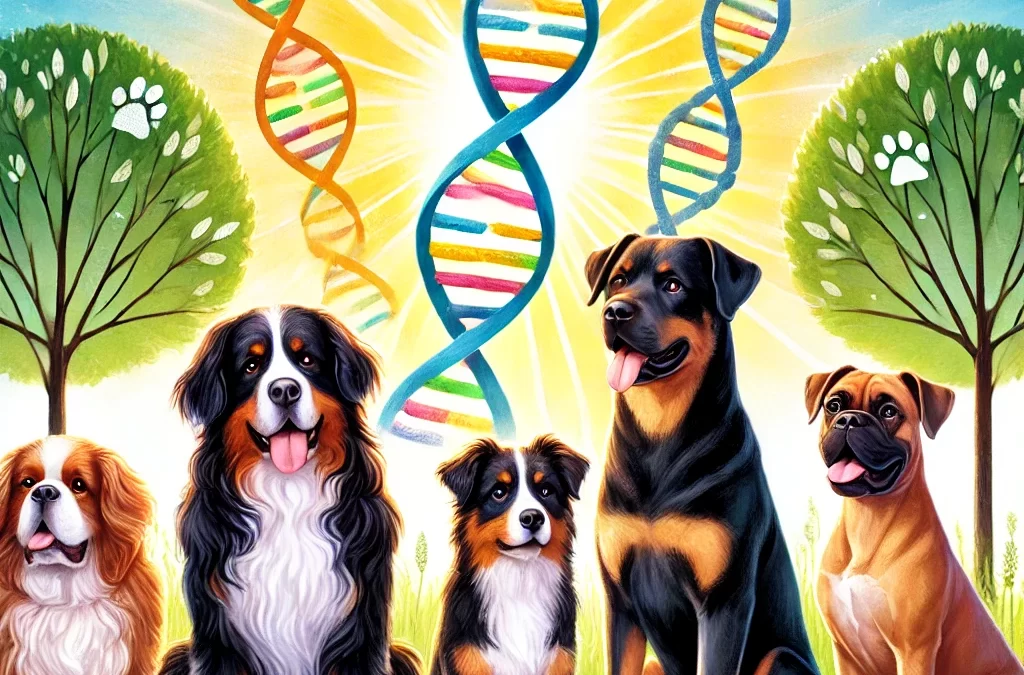
經過 TCMVET | 2024 年 12 月 6 日 | 狗癌症和腫瘤
當心愛的寵物被診斷出患有癌症時,這對任何寵物主人來說都可能是個充滿挑戰的旅程。探索正確的治療方案和補充劑對於確保他們的舒適和生活品質至關重要。在網路上提供的無數寵物癌症補充劑中, TCMVET百凸消 作為一種天然、有效的選擇,旨在幫助控制和對抗狗和貓的腫瘤生長。
了解癌症補充劑在寵物護理中的作用
寵物的癌症通常會導致身體不適、能量水平降低和免疫力下降。雖然手術、化療或放療等傳統治療方法可能有效,但它們往往伴隨著高昂的成本和潛在的副作用。這就是天然補充劑可以發揮支持作用的地方,旨在:
- 增強免疫系統。
- 腫瘤生長緩慢。
- 提高整體福祉和能量水平。
- 減少發炎和不適。
透過將傳統療法與有科學依據的補充劑結合,您可以為您的寵物提供更健康、更舒適生活的最佳機會。
什麼是TCMVET百凸消?
TCMVET百凸消 是一種植根於傳統中醫 (TCM) 原理的特殊草藥配方。它專為寵物開發,利用天然成分的力量:
- 減少腫瘤生長:其獨特的混合物針對異常細胞增殖,有助於減緩腫瘤的生長。
- 支持整體健康:憑藉其增強免疫力的特性,它可以增強寵物的自然防禦能力。
- 緩解症狀:白兔消可以減輕發炎並提高能量,確保您的寵物保持活躍和快樂。
為什麼選擇TCMVET白兔笑?
- 天然成分:白兔消不含合成添加劑,使用對寵物身體溫和的草藥成分。
- 獸醫批准:許多獸醫支持將其用作患有腫瘤的寵物綜合治療計劃的一部分。
- 科學配方:將現代研究與中醫專業知識相結合,TCMVET 白兔消經過精心設計,確保安全性和有效性。
如何使用TCMVET白兔笑
使用 TCMVET Baituxiao 簡單方便。它可以口服或與食物混合服用,方便服用。根據您寵物的體型和特定健康需求調整劑量,以確保最佳效果。在為您的寵物的日常生活添加任何新的補充劑之前,請務必諮詢您的獸醫。
TCMVET 哪裡可以買到 百圖消在線
您可以透過以下平台輕鬆在線購買TCMVET白圖消 亞馬遜, 購物,或直接從 TCMVET網站。透過快速運送選項(包括亞馬遜倉庫配送),您可以快速、輕鬆地開始您的寵物的健康之旅。
寵物主人的感言
使用過TCMVET白兔消的寵物主人經常分享溫馨的成功故事。許多人報告說,他們的寵物的能量水平明顯改善,腫瘤尺寸減小,生活品質提高。
選擇合適的寵物癌症補充劑的技巧
在網路上尋找有效的癌症補充品時,請考慮以下因素:
- 安全和成分:選擇含有天然、寵物安全成分的產品。
- 評論和建議:尋找其他寵物主人的回饋。
- 易於管理:選擇易於給您的寵物服用的補充劑。
- 專家指導:諮詢您的獸醫,確保補充劑符合您寵物的治療計劃。
結論
進行寵物癌症診斷絕非易事,但需要使用正確的工具和補充劑,例如 TCMVET百凸消,您可以為您的寵物提供舒適、照顧和改善的福祉。透過在線購買有效的癌症補充劑,您可以採取積極主動的措施來管理寵物的健康之旅。立即探索 TCMVET 白兔笑,看看它能為您的毛茸茸的朋友帶來什麼改變。

經過 TCMVET | 2024 年 12 月 6 日 | 狗癌症和腫瘤
狗的卵巢癌是一種罕見且通常無聲的入侵者,巧妙地侵入我們心愛的寵物的生活。與更常見的犬類癌症不同,卵巢癌在早期並不總是表現出明顯的症狀,這使得即使是最警惕的寵物主人也很難發現。本文深入探討了這個未被充分討論的話題,揭示了每個狗主人都應該知道的症狀和早期預警信號。
了解狗狗的卵巢癌
卵巢癌是由卵巢異常生長引起的,通常發生在中年或老年未絕育女性。由於絕育手術的增加,這種情況很少見,這大大降低了風險。然而,對於完好無損的狗來說,危險仍然存在——一個沉默的掠食者潛伏在裡面。
早期症狀:疾病的低語
卵巢癌的症狀通常與其他健康問題重疊,使得早期發現變得棘手。以下是可能暗示更深層問題的微妙跡象:
- 異常熱循環
如果您的狗的發情週期變得不規則、延長或意外停止,則可能表示卵巢異常。
- 腹部增大
積液(腹水)或腫瘤生長可能會導致您的狗的腹部明顯腫脹。
- 行為改變
嗜睡、煩躁或煩躁可能表示內部變化引起的不適或疼痛。
- Loss of Appetite and Weight
對食物缺乏興趣,加上不明原因的體重減輕,通常是早期的危險信號。
- 分泌物或出血
陰道分泌物,特別是如果異常或發生在典型的熱循環之外,需要立即就醫。
高級症狀:當沉默被打破時
隨著卵巢癌的進展,可能會出現更明顯和更嚴重的症狀:
- 呼吸困難:如果癌症轉移到肺部,就會出現呼吸困難。
- 跛行:骨骼轉移的跡象。
- 可見腫塊:腹部或周圍區域可觸及的生長物。
- 嚴重嗜睡和虛弱:表示系統性傳播和健康狀況下降。
診斷:早期檢測的重要性
卵巢癌最有效的診斷方法是結合診斷影像(超音波或 X 光)和血液檢查。對可疑腫塊進行活檢或細針抽吸可以確認癌症的存在。定期獸醫檢查,尤其是未絕育的狗,對於早期發現至關重要。
預防與絕育:挽救生命的一步
預防狗狗卵巢癌最有效的方法是絕育。這不僅消除了卵巢癌的風險,也降低了其他生殖癌症和疾病(例如子宮蓄膿)的機會。
犬癌症的整體護理
對於診斷患有卵巢癌的狗,整體護理可以補充手術、化療或放射治療等傳統治療方法。結合抗發炎飲食、增強免疫力的補充劑和減壓療法可以提高寵物的生活品質。
- 草藥支持:考慮薑黃或水飛薊等補充劑,它們以其抗發炎和解毒特性而聞名。
- 飲食調整:高蛋白、低碳水化合物飲食可能有助於減緩癌症的生長。
- 情感關懷:在這個充滿挑戰的時期,永遠不要低估愛、關注和安慰的力量。
堅定不移的紐帶
雖然狗的卵巢癌的診斷可能令人心碎,但它也深刻地提醒我們與毛茸茸的伙伴之間有著深厚的聯繫。我們採取的每一個症狀、每一個跡象和每一個行動都證明了無條件的愛,這種愛定義了我們與他們的關係。
透過了解卵巢癌的微妙跡象並採取積極措施,我們可以更好地保護我們的狗狗夥伴,確保它們過著最快樂、最健康的生活。畢竟,他們值得我們最好的。

經過 TCMVET | 2024 年 12 月 5 日 | 狗癌症和腫瘤
狗下腸的異常生長可能會導致嚴重的健康問題,從不適到危及生命的情況。這些增生通常位於直腸或結腸,可以是良性的,也可以是惡性的。了解其原因、症狀和治療方案對於及時介入至關重要。
常見的生長類型
- 息肉
- 息肉是在腸內壁發育的良性生長物。
- 它們可能會導致輕微出血、腹瀉或便秘。
- 如果不治療,息肉有時會轉變為惡性腫瘤。
- 腺癌
- 影響腸道內壁腺細胞的惡性腫瘤。
- 這是最具侵襲性的下腸癌類型之一。
- 早期發現對於有效治療至關重要。
- 平滑肌肉瘤
- 一種罕見的癌症,起源於腸道平滑肌。
- 它可能導致阻塞和嚴重的消化問題。
- 血管瘤和血管肉瘤
- 這些血管腫瘤可以是良性(血管瘤)或惡性(血管肉瘤)。
- 它們經常導致出血和貧血。
異常生長的症狀
下腸異常生長的狗可能會出現以下症狀:
- 血便: 大便呈鮮紅色或焦油狀黑色。
- 用力排便: 排便困難或疼痛。
- 大便形狀的變化: 由於阻塞而導致糞便狹窄或呈帶狀。
- 腹瀉或便秘: 排便習慣持續改變。
- Weight Loss: 不明原因的體重和食慾下降。
- 嘔吐或嗜睡: 主治胃腸道不適。
原因和風險因素
雖然異常生長的確切原因各不相同,但一些影響因素包括:
- 飲食: 劣質或加工過的飲食可能會導致發炎和腫瘤的發生。
- 年齡和遺傳: 年長的狗和某些品種(如拳師犬和德國牧羊犬)更容易患腸道腫瘤。
- 慢性發炎: 結腸炎等疾病可能會使狗容易出現腫瘤。
- 接觸毒素: 環境毒素和致癌物質會增加癌症風險。
診斷
獸醫使用多種方法來診斷腸道生長:
- 體檢: 觸診以識別腫塊。
- 成像: X 光、超音波或 CT 掃描可顯示生長物。
- 內視鏡檢查: 插入相機檢查腸道並收集組織樣本。
- 切片檢查: 對組織進行實驗室分析以確定生長是良性還是惡性。
治療方案
治療方法取決於生長的類型和嚴重程度:
- 手術切除: 息肉和局部腫瘤通常可以透過手術切除。
- 化療或放射治療: 用於惡性生長,特別是腺癌。
- 飲食管理: 高纖維或處方飲食來控制症狀。
- 安寧療護: 晚期病例的疼痛緩解和生活品質管理。
預防和監測
- 定期檢查: 定期去看獸醫可以幫助及早發現生長情況。
- Healthy Diet: 富含天然優質成分的飲食可以減少發炎。
- 高危險品種篩檢: 定期篩檢容易有腸道問題的品種。
何時去看獸醫
如果您的狗出現直腸出血、慢性消化問題或糞便有顯著變化的跡象,必須立即諮詢獸醫。早期診斷和治療可以顯著改善結果。
透過保持資訊靈通和積極主動,寵物主人可以更好地保護狗狗的健康並在問題升級之前解決潛在問題。

經過 TCMVET | 2024 年 12 月 5 日 | 狗癌症和腫瘤
癌症仍然是全世界狗死亡的主要原因之一。雖然遺傳傾向經常成為討論的焦點,但更深入的探索表明,環境因素所起的作用可能比之前認為的要大得多。讓我們深入探討這個主題,揭開一些關於狗患癌症的真正頭號原因的驚人真相。
超越遺傳:環境觸發因素成為焦點
人們很容易將癌症歸咎於遺傳。畢竟,某些品種(例如金毛尋回犬和拳師犬)更容易患淋巴瘤或肥大細胞瘤等癌症。然而,專家們越來越多地指出 環境致癌物 作為犬類癌症的主要驅動因素。這些包括:
- 化學品暴露: 殺蟲劑、除草劑和家用清潔劑每天都會使狗狗接觸有害化學物質。其中許多物質含有致癌物質,隨著時間的推移會在體內累積。
- 加工飲食: 粗磨食品和罐頭食品通常含有防腐劑、人工色素和低品質成分,可能會導致長期發炎和細胞損傷。
- 空氣污染: 狗具有敏銳的嗅覺,比人類吸入更多的環境毒素。污染的空氣、香菸煙霧和汽車廢氣只是其中的一些罪魁禍首。
- 過度接種疫苗: 雖然疫苗很重要,但過度接種疫苗與某些癌症有關,例如注射部位肉瘤。根據您的狗的具體需求量身定制疫苗接種計劃至關重要。
發炎:無聲的催化劑
慢性發炎是另一個關鍵因素。從未經治療的過敏到肥胖,發炎為癌細胞的繁殖創造了完美的風暴。這強調了對犬類健康採取整體方法來解決身體和環境壓力的重要性。
預防是最好的良藥
如果環境觸發因素是導致狗狗罹癌的首要原因,那麼預防策略就是我們最好的防禦措施。寵物主人可以採取以下行動:
- 改用自然飲食: 選擇不含防腐劑的新鮮天然食品。在狗狗的飲食中加入薑黃、藍莓和綠花椰菜等抗癌成分。
- 過濾水: 提供過濾水以減少接觸重金屬和毒素。
- 限制化學品的使用: 用對寵物安全的替代品取代有毒的清潔產品,並減少在家中和院子裡使用殺蟲劑。
- 常規排毒: 考慮使用水飛薊或小球藻等天然解毒劑來幫助消除狗體內的毒素。
- 定期檢查: 早期發現是關鍵。每月檢查是否有腫塊和異常生長,每年去看獸醫進行徹底檢查。
整體醫學的作用
自然療法在尋求對抗癌症的狗主人中越來越受歡迎。從針灸到草藥補充劑,例如 TCMVET百凸消,這些治療旨在減少發炎、增強免疫力並促進整體健康。這些方法與生活方式的改變相結合,為預防和控制狗的癌症提供了一種有前途的方法。
行動呼籲:保護我們最好的朋友
作為照顧者,我們有能力盡量減少我們的狗接觸致癌因素的機會。透過專注於預防、營養和自然療法,我們可以顯著降低罹患癌症的風險並延長毛茸茸的伙伴的生命。讓我們主動質疑舊觀念,採取新做法,維護我們心愛寵物的福祉。

經過 TCMVET | 2024 年 12 月 4 日 | 狗癌症和腫瘤
儘管與其他犬類癌症相比,心臟基底腫瘤較少被討論,但它給受影響的狗帶來了重大的健康挑戰。這些腫瘤起源於心臟底部附近,通常不會被發現,直到它們長到足以乾擾心臟功能。了解這種無聲無息但嚴重的病症可以幫助狗主人採取積極的診斷和治療措施。
什麼是心臟基底腫瘤?
心基腫瘤是在心臟基部內或周圍形成的腫瘤,通常靠近主動脈或肺動脈等重要結構。兩種最常見的類型是:
- 化學感受器瘤(副神經節瘤): 由調節血氧水平的化學感受器細胞產生的緩慢生長的腫瘤。
- 異位甲狀腺腫瘤: 源自心臟附近甲狀腺組織的罕見腫瘤。
這兩種類型都會壓迫心臟或鄰近結構,導致嚴重的心血管併發症。
易患心臟基底腫瘤的品種
雖然任何狗都可能患上這些腫瘤,但某些品種的狗由於遺傳傾向而更容易患上這些腫瘤。這些包括:
這些品種通常會在生命後期表現出症狀,這種情況經常在中年至老年犬中被診斷出來。
徵兆和症狀:微妙的警告
心臟基底腫瘤在早期階段通常無症狀,這使得早期檢測具有挑戰性。然而,隨著它們的生長,可能會出現以下症狀:
- 運動不耐受: 難以進行狗狗曾經喜歡的活動。
- 咳嗽: 由液體積聚或氣管受壓引起。
- 暈厥(暈厥): 由於血液流動中斷而導致。
- 腹部腫脹: 由於心臟衰竭導致液體積聚(腹水)。
- 呼吸困難: 表示肺部或氣道受壓。
這些症狀通常與其他心臟或呼吸系統疾病相似,使診斷變得複雜。
創新的診斷方法
X 光和超音波心動圖等傳統診斷方法仍然很有價值,但新技術正在推動該領域的發展:
- CT 和 MRI 掃描: 提供腫瘤和周圍結構的詳細成像。
- 細針抽吸切片: 幫助確定腫瘤類型並告知治療計劃。
- 基因檢測: 新興工具可以辨識某些品種的傾向。
治療方案:量身訂做的方法
心臟基底腫瘤的治療取決於腫瘤類型、大小和狗的整體健康狀況等因素。選項包括:
- 手術切除: 對於小型局部腫瘤有效,但由於靠近重要結構而存在風險。
- 放射治療: 通常用於無法手術的腫瘤以減緩生長並減輕症狀。
- 安寧療護: 包括利尿劑等藥物來控制液體滯留等症狀。
自然療法:補充解決方案
對於尋求替代方法的業主來說,自然療法可以補充傳統療法:
- Herbal Supplements: 黃耆和薑黃等配方可以支持免疫健康並減少發炎。
- 針刺: 可以改善受影響的狗的血液循環並減輕疼痛。
- 營養支持: 富含抗氧化劑和 omega-3 脂肪酸的飲食可以促進整體健康。
雖然自然療法可能是有益的,但應始終與獸醫討論,以確保它們不會幹擾標準治療。
預後:會發生什麼
患有心臟基底腫瘤的狗的預後差異很大。化學感受器瘤通常生長緩慢,如果治療得當,狗可以存活數月甚至數年。然而,侵襲性或無法手術的腫瘤可能會導致壽命縮短。定期監測和及時介入是改善結果的關鍵。
行動呼籲:提高認識
心臟基底腫瘤在獸醫學中仍然是一個未被充分認識的威脅。提高認識可以使受影響的狗得到更早的診斷和更好的結果。高危險品種的主人應優先考慮定期檢查,並在懷疑有心臟問題時提倡高級診斷。
結論
心基腫瘤是一種複雜且具挑戰性的疾病,但知識就是力量。透過了解風險、症狀和可用的治療方法,狗主人可以為他們的毛茸茸的同伴提供最好的護理。我們可以共同揭露這種無聲的威脅,並為狗及其家人帶來希望。

經過 TCMVET | 2024 年 12 月 4 日 | 狗癌症和腫瘤
當考慮為您的家庭添加一個毛茸茸的伴侶時,健康應該是您決策過程中的關鍵因素。雖然所有的狗都容易受到某些健康狀況的影響,但某些品種在遺傳上容易罹患癌症。了解這些風險可以讓您做出明智的選擇並主動管理寵物的健康。
為什麼有些品種更容易罹癌?
與人類一樣,狗的癌症也受到遺傳、環境因素和年齡的影響。針對特定性狀進行選擇性培育的品種通常會遺傳遺傳弱點,包括易患癌症的傾向。對於許多品種來說,這種不幸的遺產是幾個世紀以來旨在保持理想特徵的近親繁殖的結果。
罹患癌症風險較高的品種
1.黃金獵犬
金毛尋回犬因其友善的天性和聰明才智而受到人們的喜愛,但它們也具有很高的癌症風險,尤其是 淋巴瘤 和 血管肉瘤。研究表明,近 60% 的金雞一生中會患上癌症。這項驚人的統計數據推動了金毛尋回犬終身研究等研究計劃,旨在揭示其易感性背後的原因。
2.伯恩山犬
伯恩山犬以其溫和的氣質和引人注目的三色皮毛而聞名,它們面臨著高於平均水平的風險 組織細胞肉瘤,一種罕見但具有侵襲性的癌症。他們相對較短的壽命(6-8年)通常與這種疾病有關。
3.拳擊手
拳擊手充滿頑皮的活力和忠誠,容易患上多種癌症,包括 肥大細胞腫瘤 和 淋巴瘤。它們的易感性可能與特定的基因突變有關,因此定期進行獸醫檢查至關重要。
4.羅威納犬
儘管羅威納犬被譽為強壯、健壯的狗,但它們很容易受到感染 骨肉瘤,一種骨癌。這種風險在體型較大的羅威納犬中尤其高,凸顯了監測其體重和關節健康的重要性。
5.蘇格蘭梗
蘇格蘭梗,親切地稱為蘇格蘭梗,受到以下因素的影響特別嚴重: 移行細胞癌(TCC),膀胱癌的一種。這種特定於品種的風險凸顯了觀察這些小型但堅固的狗的泌尿系統健康的重要性。
打破刻板印象:小品種也不例外
雖然癌症通常與大型品種有關,但小型品種也不能倖免。例如, 波士頓梗犬 和 臘腸犬 分別容易罹患肥大細胞瘤和黑色素瘤。狗的體型並不總是與癌症風險有關,因此對所有寵物主人保持警惕至關重要。
如何降低狗狗罹患癌症的風險
雖然您無法改變狗的基因組成,但您可以採取積極措施來最大程度地降低風險:
- 營養:為您的狗提供均衡飲食,添加富含抗氧化劑的食物。 omega-3 脂肪酸等補充劑也可以支持細胞健康。
- 定期鍛鍊:讓您的狗保持活躍以保持健康的體重,減少免疫系統的壓力。
- 避免毒素:盡量減少接觸殺蟲劑、菸草煙霧和其他致癌物質。
- 例行檢查:安排每年一次的獸醫檢查,以便及早發現異常。
- 絕育/絕育:對於某些品種,這可以降低生殖系統癌症的風險。
創新研究:一線希望
獸醫學的最新進展為易患癌症的品種帶來了希望。免疫療法、標靶療法和基因檢測變得越來越容易實現,從而實現早期檢測和客製化治療。例如,犬類癌症基因組計畫正在繪製流行品種的遺傳傾向圖,為特定品種的預防措施鋪平道路。
選擇品種:衷心的決定
決定歡迎哪個品種進入您的家需要平衡實際考慮與情感聯繫。如果您被癌症風險高的品種所吸引,請確保您為潛在的醫療費用和控制慢性病的情感承諾做好準備。許多愛狗人士都會同意:這些品種帶來的快樂往往超過其健康風險所帶來的挑戰。
結論
雖然某些品種更容易患癌症,但認識和主動護理可以顯著改善他們的生活品質。透過了解他們獨特的脆弱性,您可以為他們提供應有的愛和關懷,將可能令人心碎的挑戰轉變為同情心和韌性的旅程。






